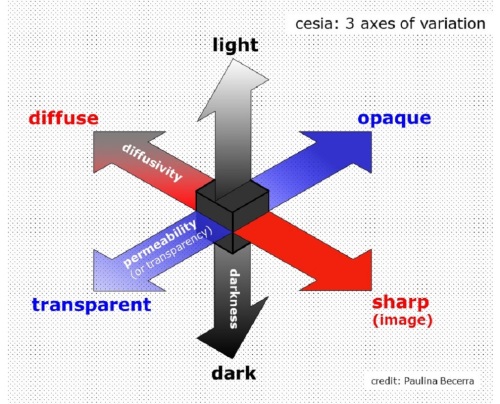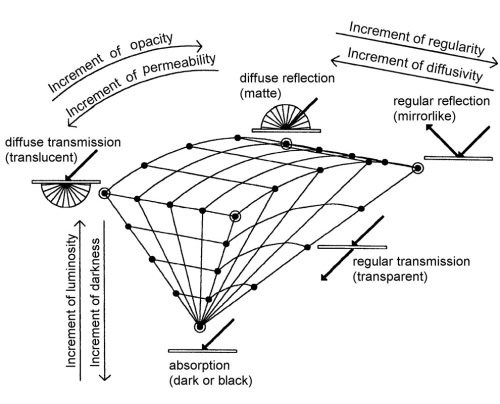Cesia is the name proposed for the aspect of visual appearance related to the perception of different spatial distributions of light. Light that is not absorbed by an object may be reflected or transmitted either regularly or diffusely. These interactions of light with matter are perceived as more or less glossy (from a mirror to a matte surface as the two extremes), more or less transparent, translucent or opalescent, in different levels of darkness (according to the light-dark axis).
It is the same kind of phenomena that Richard Hunter calls “geometric attributes of appearance”. The advantage is that the concept of cesia encompasses all the involved aspects in a single word, and that all cesias have been arranged in a three-dimensional order system according to three axes of variation: transparent-opaque, diffuse-regular (or sharp), light-dark.
The word was proposed by César Jannello in the 1980s, but he died in 1985 without developing the concept further (beyond that it refers to such visual qualities as transparency, gloss, translucency, opacity, etc.), and without devising a clear and comprehensive order system for cesias. This was the purpose of Caivano since 1988 and the early 1990s. Later, the concept of cesia was also taken and amplified by other authors (Green-Armytage, Jofré, Lozano, López, Giglio, Becerra, Echagüe, Parada, Lee & Sun, among them), who applied it to different fields. A chronology of the development of the concept can be explored here.
A few examples of scales of cesia in different materials and media
From matte
to dark
From translucent
to dark

From transparent
to dark
From reflective
to dark
From matte
to translucent

From translucent
to transparent
From transparent
to reflective
From reflective
to matte
From opaque
to transparent


















